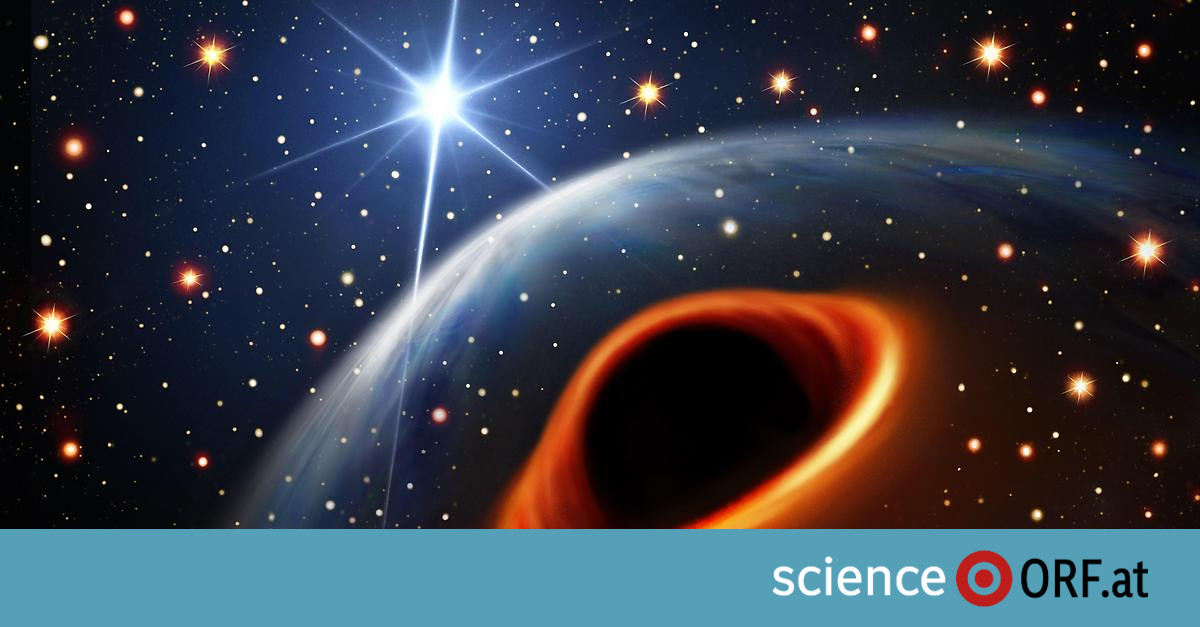The mysterious object is located about 40 thousand away in the Milky Way Galaxy Light year Far from Earth, it has about 2.35 times the mass of our Sun and does not glow itself – the latter in particular being a concern for researchers. Ewan Parr From the Max Planck Institute for Radio Astronomy in Germany, which is a clear indication that the new discovery was not an ordinary star.
The object is likely just the remains of a star that has already exploded. However, astrophysical compact objects of this type theoretically only exist in one of two variants of space: either as a black hole or as a black hole. Neutron star. In either case, the mass of the newly discovered celestial body will be very unusual.
Previous assumptions
A neutron star forms in the final stage of the evolution of particularly massive stars, when their cores collapse and the material becomes extremely compressed. They are then packed to a similar density as in atomic nuclei. On the other hand, a black hole usually has a much larger mass, which means that the gravity emanating from it is already so strong that not even light can escape.
According to previous theories, neutron stars cannot have a mass much larger than 2.2 times the mass of the Sun, otherwise gravity would theoretically have the upper hand and lead to the formation of a black hole. However, all black holes examined so far have at least five solar masses.

Therefore there is a “mass gap” between the maximum mass of neutron stars and the minimum mass of black holes, which remains a mystery to astronomy. Until now, gravitational wave measurements have only indicated the presence of isolated celestial bodies in this gap, although their shape and composition are unclear.
More massive than a star, and lighter than a black hole
The newly discovered celestial body is located in… Spherical clusters NGC 1851. With the help of the High Resolution Radio Telescope System Meerkat In South Africa, an international research team was able to collect data for the first time, which they are currently using “Science” magazine gifts.
In fact, researchers found the strange object while observing the pulsar PSR J0514-4002E. A pulsar is a neutron star with a strong magnetic field that emits regular radio pulses due to its rotation. Careful measurement of these pulsations showed the team that the pulsar forms a close binary system with another object. The data then gave this new object a mass between 2.09 and 2.71 solar masses, with the most likely value being 2.35 solar masses. This means that the orb lies exactly in the lower range of the mass gap, making it particularly interesting for science.
However, it is still unclear what exactly this dark object in the Milky Way is. According to the researchers, it could be an exceptionally heavy neutron star, an extremely light black hole, or something completely unknown.
Emergence theory
“All these possibilities related to the nature of the body are exciting,” explained one of the project co-leaders Benjamin Stubbers From the University of Manchester (UK) to agencies. “If it's a black hole, we can use it to test the theory of gravity. If it's a neutron star, it could provide us with new insights into nuclear physics at very high densities.” If it was in fact something completely unknown, it would be a huge sensation in astronomy anyway.
Spherical cluster simulation
Zoom-in simulation of a globular cluster, showing a possible first encounter between a pulsar and the mysterious celestial body, which is throwing a smaller star out of its orbit.
How such an object could form in a mass gap also remains a mystery. Since the pulsar is located in a globular cluster, researchers suspect the origin story is rather complicated. NGC 1851 contains about half a million stars that are very close together. For this reason there are often relatively close encounters in which double stars are formed or even partners are exchanged.
The research team suspects that the newly discovered celestial body may have been formed by the merger of two smaller neutron stars, and that it only entered the pulsar's orbit later during a close encounter.

“Total coffee aficionado. Travel buff. Music ninja. Bacon nerd. Beeraholic.”








More Stories
Coral Seeding: Artificial Insemination Makes Coral More Heat Tolerant
Fear, Anger, and Denial: How People Respond to Climate Change – Research
LKH Graz: Using radiation to combat heart arrhythmias